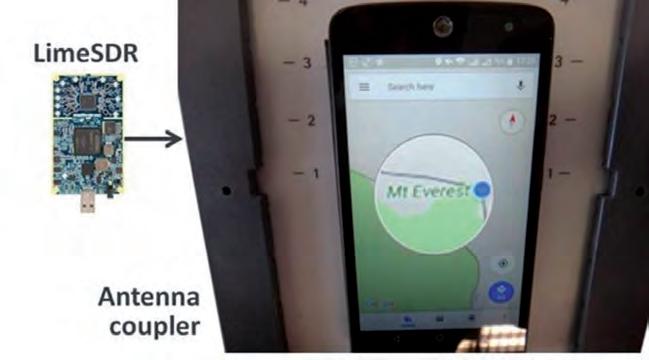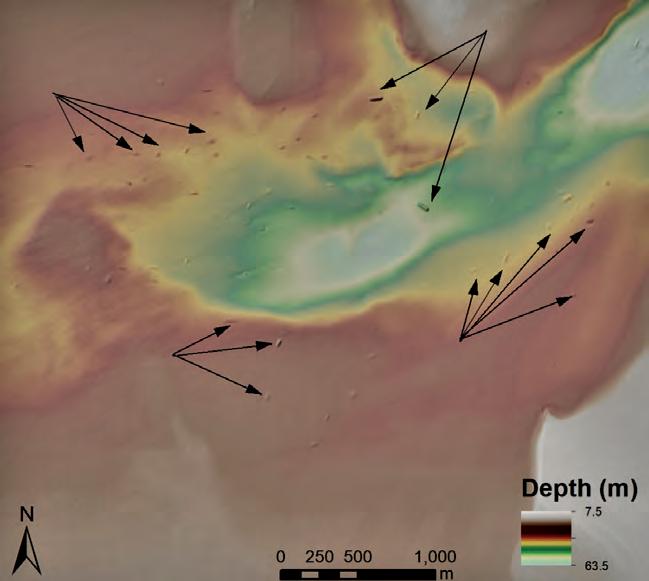Feature |
By Andrew K. Hamilton and Gabriel Joyal, Canada
Bathymetric Mapping of the High Arctic for Ocean Modelling and Charting
Surveying the Arctic by Sailboat Bathymetric soundings in the Canadian Arctic are sparse, especially in the High Arctic (>75°N), where large sections of coast and the continental shelf are completely uncharted. The lack of accurate bathymetry severely limits the accuracy of ocean circulation models and the understanding of how marine-terminating glaciers in the region will respond to a rapidly changing ocean climate.
The Canadian High Arctic is undergoing some of the most rapid climate forcing on the planet, with regional air temperatures increasing at twice the global average. Accelerated melting of the extensive ice fields and glaciers of the Canadian Arctic Archipelago (CAA) has led it to be the largest contributor to global sea-level rise outside of Greenland and Antarctica. Climate forcing by atmospheric warming, however, is only one part of the equation. Glacier mass loss by calving of icebergs and submarine melting driven by warm ocean water is another key factor, yet these glacier-ocean interactions remain largely unstudied in the CAA. Marine-terminating glaciers also change ocean properties by reducing water temperatures and releasing fresh water into the ocean, altering ocean stratification and circulation. Understanding these feedback mechanisms is critical to the prediction of future glacial contributions to sea-level rise and the ocean’s response to climate forcing. However, the accuracy of predictions is fundamentally limited by knowledge of the geometry of the problem.
GEOMETRICAL CONSTRAINTS The geometrical constraints on glacier-ocean interactions are numerous: 1) the height and topography of the submerged portion of the glacier face determine the area subject to submarine melting; 2) the depth of the seabed at the glacier grounding line defines the depth of freshwater discharge into a fjord and buoyancy-driven fjord circulation as well as the properties of ocean water in contact with the ice (water temperatures generally increase with depth in the Arctic); 3) the bathymetry of the receiving fjord influences the vertical distribution of water masses that can propagate to the glacier termini through the presence of sills and shoals; and 4) the topography of the continental shelf determines regional ocean circulation patterns and the properties of ambient waters present at fjord mouths via deep troughs that cut across the continental shelf. At present, most fjords and vast sections of the continental shelf in the CAA remain uncharted,
owing largely to the region’s harsh climate and inaccessible ice-covered seas. Therefore, existing bathymetric grids of the CAA underlying state-of-the-art ocean circulation models are based on interpolations between very sparse soundings. The models then fail to capture the complexities of seabed topography and its influence on ocean circulation, water mass transformation and glacier-ocean interactions. There is a strong need to develop new cost-effective mapping programmes in the High Arctic to improve data coverage, particularly in the shallow uncharted nearshore areas that larger vessels with deep draft are unable to access safely.
Innovative Research Programme In 2019, the Canadian Glacier-Ocean-Iceberg Dynamics in a Changing Canadian Arctic (GO-Ice) project began with the goal of better understanding glacier-ocean interactions in the CAA. A key objective of the project is to survey previously uncharted coastal regions, particularly the glacial fjords and coastline of south-east Ellesmere Island and north-east
Photo 1: A marine-terminating glacier on Ellesmere Island in the Canadian High Arctic (G. Joyal).
14 | Is s u e 1 2021 | Hydro i nt e r nat i o na l
14-15-17_featurehamilton.indd 14
18-03-21 14:06





